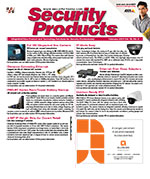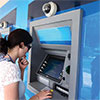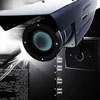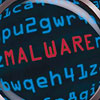
February 2014
- UTILITY SECURITY - The Grisley Lure of Copper
- SOFTWARE SOLUTIONS - Making the Choice
- EMERGING TECHNOLOGIES - Increasing Security with Smart Credentials
- THE STATUE OF LIBERTY - A Light of Freedom
Features

By Jamie Friedlander, Ralph C. Jensen
Security at the Statue of Liberty has never been taken for granted; it just hasn’t been a top priority of the government. That is not the case with the U.S. Park Police. They have used, to the best of their ability, security equipment that was appropriated but lacked the highest technology.

Technology bolsters security and business practices in the financial vertical
By Joe Pellettiere
There are tens of thousands of bank branches and financial services locations throughout the world. The business environment itself is complex, as it combines elements of high-end commercial services with a frontline, retail component.

Fixed costs, customized solutions and user convenience - determining factors in buying physical identity and access management
By Ajay Jain
The migration of physical security technology to a network platform has made it easier and more convenient for organizations to integrate the various modalities of physical security into a unified configuration to better safeguard their employees, visitors, premises and material/intellectual property.

Prepare for smart credential and NFC deployment now
By Jeremy Earles
For about the same price, a smart credential provides a higher level of security, more convenience and far greater functionality than a proximity card. As used on college campuses and in newer access control systems, smart credentials have the ability to manage access, payments and many other functions much more securely.

How to turn electrical substations into less tempting targets
By Robert Moore
It is unbelievable how some people are so desperate for money that they risk their very lives for a quick buck. With copper as one of today’s most grisly lures, thieves scale fences to high-voltage distribution sites and cut the copper off live, megawatt lines.
Departments

By Ginger Hill
The cold, brisk wind of December in Dallas attacked my body that was wrapped in a winter’s coat as I stepped out of my vehicle, ready to seize the not-so-ordinary work day ahead of me. A mist filled the air, kissing my cheek with coldness as harsh as death. You see, death was the reason I was here in the first place; yet, this was a place of happiness.

Expansion at California card games facility includes security upgrade
By Ken LaMarca
Players Casino requested demos and ultimately selected OnSSI’s Ocularis, using encoders to migrate many of their existing analog cameras to avoid the expense and inconvenience of having to rip and replace every camera. One key factor in the decision for Ocularis was the software’s fast and easy training for both new and seasoned employees.
By Ralph C. Jensen
Looks like it is just about time for biometrics to make its long awaited debut. Yes, we have seen biometrics for quite some time, and it is true that the impact has been strong in the security world. But, get ready to see biometrics on steroids. It’s coming.
Networking Security

Top three myths of IP-based physical access control technology
By Ola Jönsson
It is no exaggeration to say that network video technology has revolutionized the video surveillance market, and the access control industry is on the verge of a similar revolution.
Manufacturers should increase engagement to foster loyalty
By Charles P. Williams
The Virtual Desktop Infrastructure (VDI) market is growing fast so much that industry analysts predict it will be worth over $5 billion within the next three years. Why did this take so long to arrive? After all, virtual desktops have been around since the 1990s.
Cyber attacks mean business risks
By Andrew Braunberg
People have been talking about the inevitable rise of cyber security insurance for more than a decade now. Cyber attacks have grown into a significant business risk, and an important component of reducing this type of risk is via transfer through insurance policies.

Setting up perimeter security
By David Finger
An Advanced Persistent Threat (APT) is a piece of malware that is distinguished by the sophistication of its code, the vectors cybercriminals are choosing for attack and the perseverance with which they’re going after their targets.

Stop theft of credit card and other biographical data
By Brian Laing
The one thing consistent about malware attacks is that they continue to change quite a bit as time goes by. Initially, many attacks were unstructured and untargeted, indiscriminately honing in on large numbers of hosts in an attempt to find their vulnerabilities. The outcome of these initial attacks was often simple defacement or destruction of data with very few of the overall volume of these attacks covered in the news.